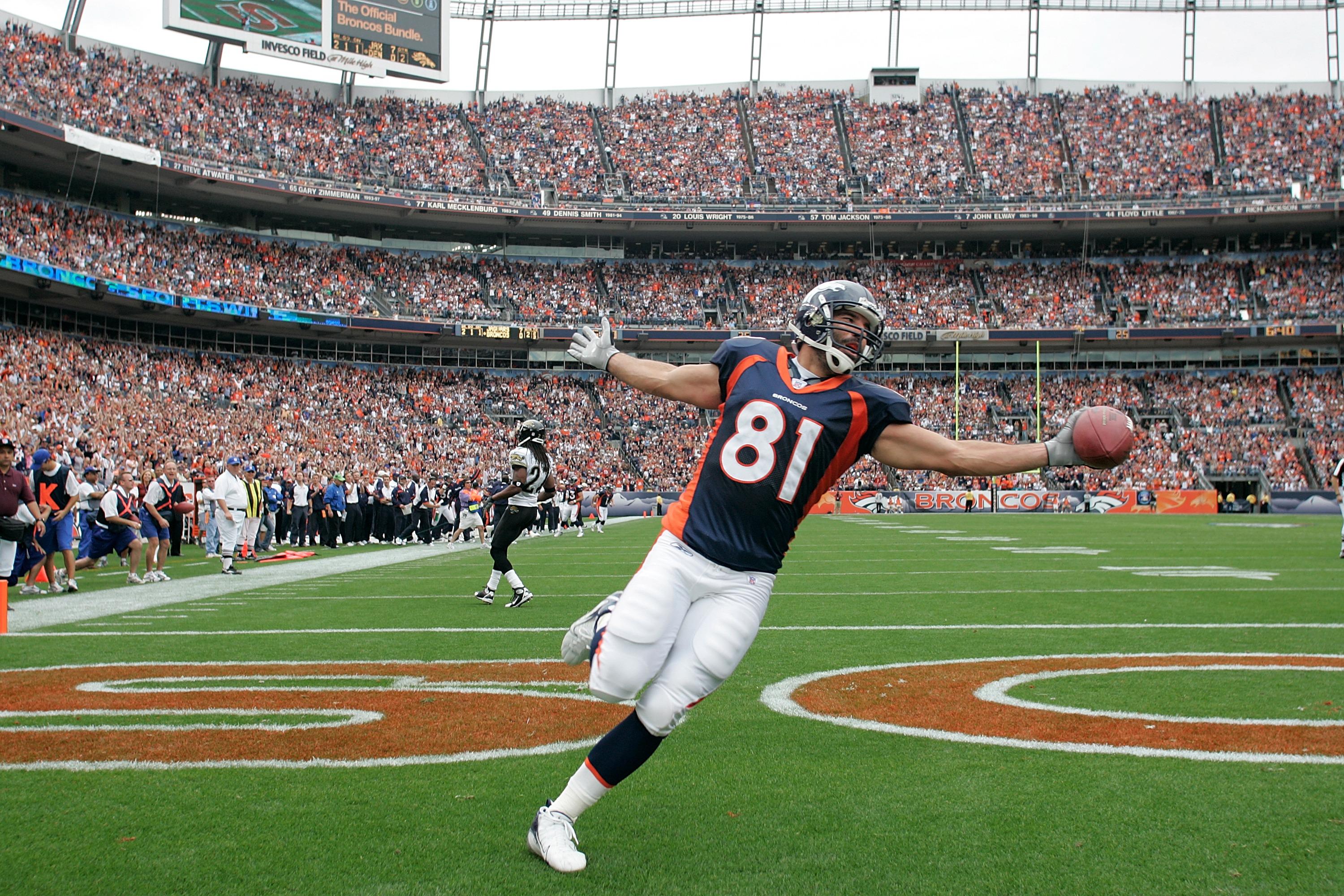Barry, you’re right about Aaron Rodgers. It’s astonishing to watch him play the position. Aside from his physical skills, which are manifold, his mind seems to be dialed in to the moment so completely that it appears he’s observing it all from a distance. The look on his face in slow-motion replays is frightfully Zen. Television doesn’t show the chaos and speed of an NFL game, and it also doesn’t take into account the players’ eye-level vantage point. Things are not so clear at eye level. There are jumbles of bodies flying around at different depths, and to be able to see them, to actually see everything, takes a heightened awareness that is uncoachable. It also doesn’t hurt when you have a group of offensive weapons as potent as the ones the Packers have.
And I may have a healthy bias here, but I agree with Chris that the hybrid tight end can be one of the most effective weapons on the field. You see, I was a bit of a hybrid player myself. I was a wide receiver in college and during my first two years in the NFL. All I ever wanted to do was catch passes. Then after the 2004 season, the head coach of the Broncos, Mike Shanahan, called and asked how I felt about a switch to tight end. He said he thought it would be great for me. It would get me more involved in the offense. I would catch more balls. I would catch more balls?! Yes, of course I’ll do it.
Mike Shanahan has always valued a pass-catching tight end who can stretch the defense, work the middle of the field—including the ever-vulnerable seams—and beat the generally inferior coverage skills of linebackers and safeties. He broke the mold with Shannon Sharpe. Shannon played at about 225 or 230, hardly the beefy frame we expect for a tight end. But it worked. He became a good enough blocker to get by, and on passing downs, he was awesome.
My tight-end pass-catching career did not pan out like I’d hoped. After four seasons of it, I’d tacked on 19 more catches to the eight balls I caught as a wide receiver in 2004, bringing my career total to 27. But I learned a lot more about the game. Tight ends, after quarterbacks, need to have the deepest knowledge of how the offense operates. Receivers have only a cursory knowledge of the run game, and running backs have only a cursory knowledge of the passing game. Tight ends need to know everything, including pass protections. That new attention to detail changed how I viewed the sport.
Mostly, it became much more violent. It turned into hand-to-hand combat on a daily basis with men who were much bigger and stronger than me. I played tight end at 235 pounds on a good day. As the season wore on, it was difficult for me to keep that weight on and I’d dip under 230. One season I was getting dangerously close to 220 pounds, and that doesn’t fly with the coaches. We had weigh-ins every week, so on the mornings I had to hit the scale I would walk to my locker, put on my sweats, then walk into the training room and grab two five-pound ankle weights to strap on under my sweats. Nobody ever caught on. 232.
As fans, we see only the end result: the game. But practice is the proving ground, and I was getting my ass kicked. I had a daily “Oh, shit” moment as I walked out on the field, because I knew that I was about to feel a whole lot of pain. Run blocking is about technique, and I had none. I was shooting myself head-first into defensive lineman like a spear and hoping to stalemate them long enough to call it a win. (If your guy doesn’t make the tackle or disrupt the play, it’s a win.)
The agony of those “Oh, shit” run-blocking moments was lessened by the ease with which I got open on pass routes. Playing tight end with wide-receiver skills is almost unfair. I had to learn a variety of line-of-scrimmage release techniques, but once that area was cleared, it was lovely. In zone coverage, it’s pretty easy to get open if you understand what coverage they’re in. And beating man coverage against a linebacker or a safety, having cut one’s route-running teeth on cornerbacks, is much easier.
And that’s what we’re seeing these days with tight ends like Rob Gronkowski. They have wide-receiver skills and the size to exploit any defense they come up against. It isn’t an accident that there are more tight ends with at least two touchdown catches than there are teams in the NFL. Everyone is throwing to them, and some teams are throwing to two of them! It’s great to watch. Two tight-end formations are very common because, for the reasons Chris laid out, they are so hard to defend. If you stay in your base defense, your two athletic tight ends will have an easy time getting open. If you try to get cute and put a nickel defender on one or both of the tight ends, you’ll get gashed open in the running game.
And that’s why tight ends who can run great routes and block are so valuable. They are also pretty rare. The two are diametrically opposed. One takes patience and finesse. The other takes grit and balls. And it’s hard to run crisp routes with huge balls.
